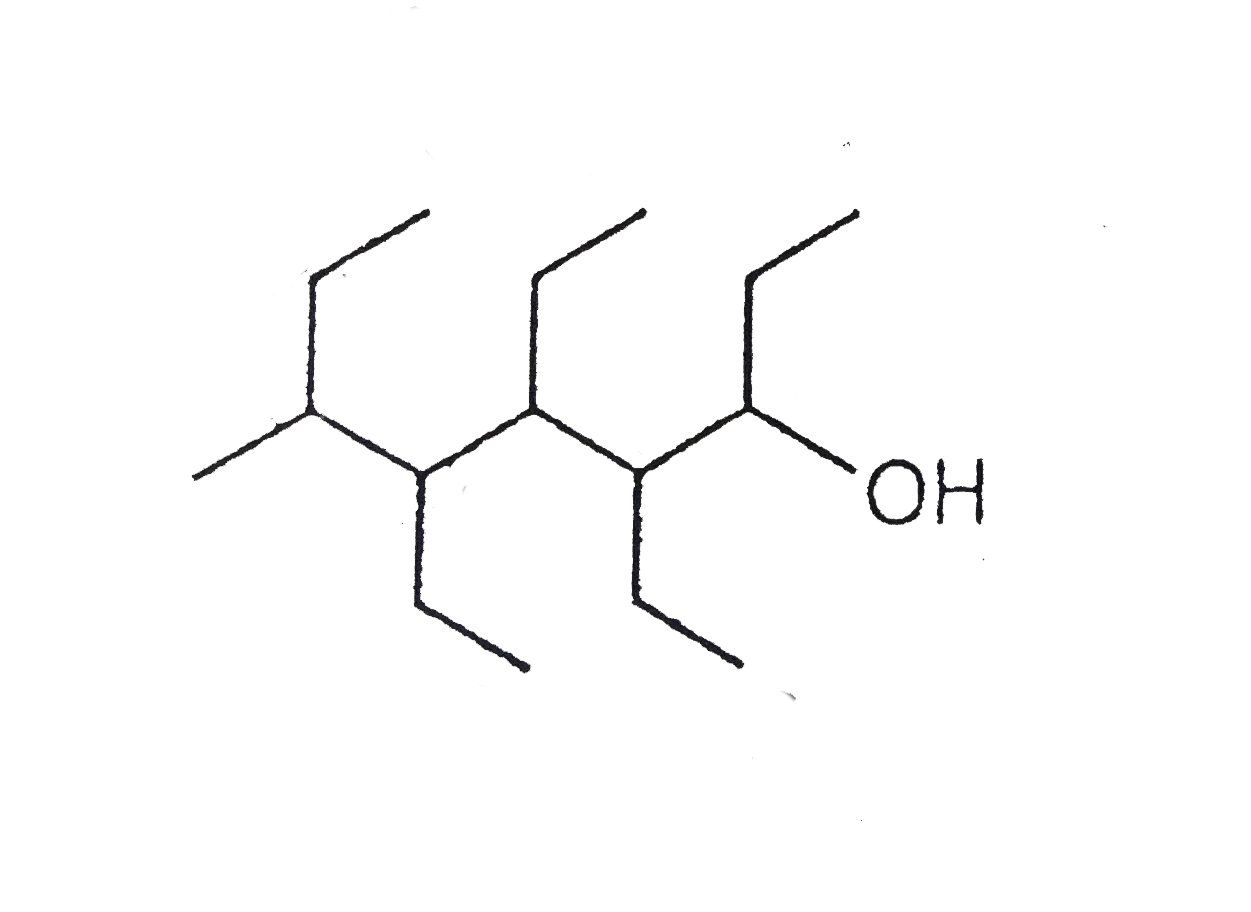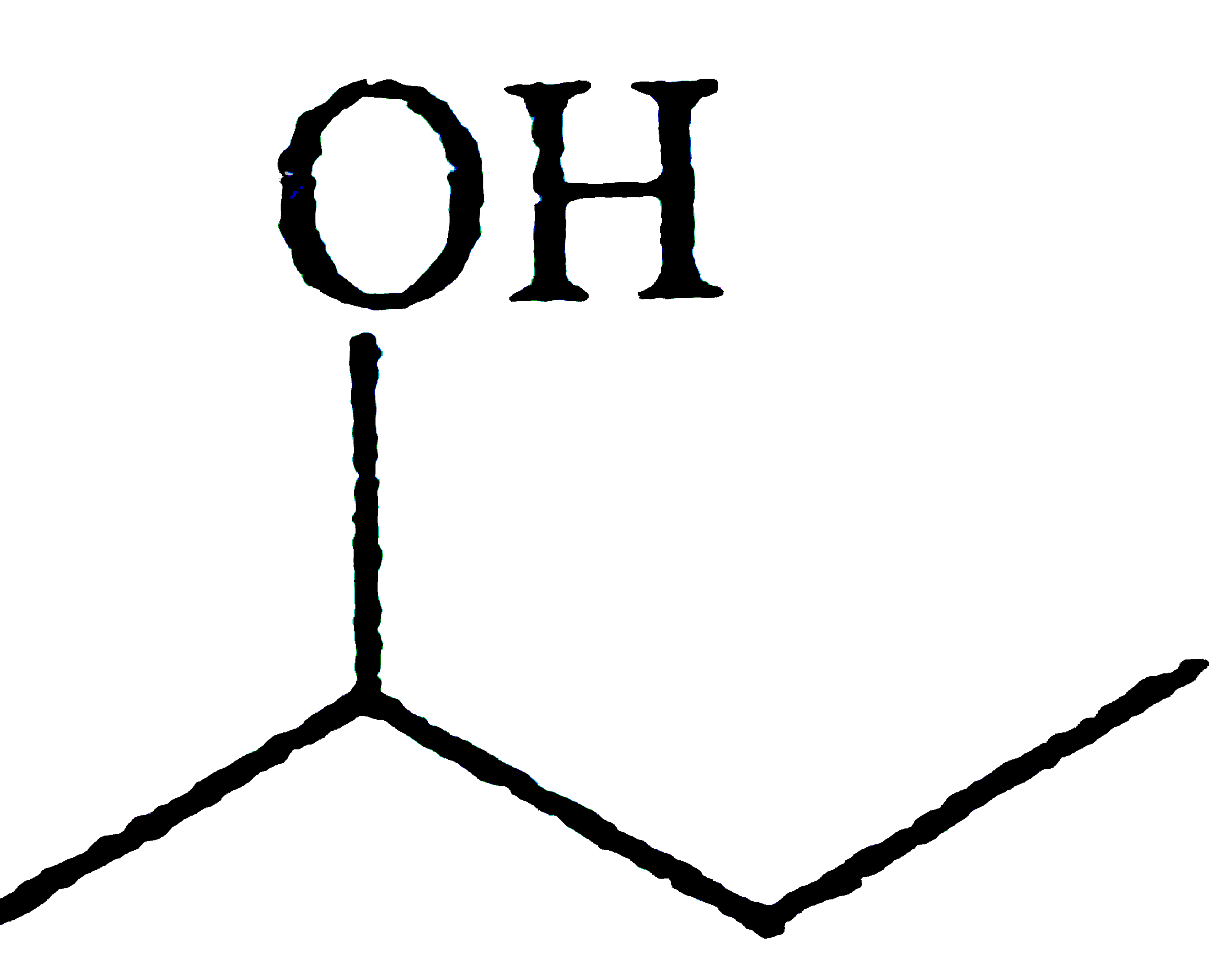Comprehension # 1
If the organic compound contains more than two similar terminal groups and all of them are directly attached to the principal chain, then none of them forms a part of the principal chain. Special suffixes are used to name these :-
Functional groupSuffix−CONH2Carboxamide−CNCarbonitrile−CHOCarbaldehyde−COOHCarboxylic acid
Carbon atoms of these terminal groups are not counted in the principal chain. If any one of these terminal groups is not directly attached to the paraent chain and forms the part of side chain, then the longest chain is selected containing two such similar groups at its two ends. The groups present in the side chain are treated as substituents and are indicated by suitable prefixes.
Indicate whether the following IUPAC names are true (a) or false (b)
_E01_044_Q01.png)
Step by step video & image solution for Comprehension # 1 If the organic compound contains more than two similar terminal groups and all of them are directly attached to the principal chain, then none of them forms a part of the principal chain. Special suffixes are used to name these :- {:("Functional group",,"Suffix"),(-CONH_(2),,"Carboxamide"),(-CN,,"Carbonitrile"),(-CHO,,"Carbaldehyde"),(-COOH,,"Carboxylic acid"):} Carbon atoms of these terminal groups are not counted in the principal chain. If any one of these terminal groups is not directly attached to the paraent chain and forms the part of side chain, then the longest chain is selected containing two such similar groups at its two ends. The groups present in the side chain are treated as substituents and are indicated by suitable prefixes. Indicate whether the following IUPAC names are true (a) or false (b) by Chemistry experts to help you in doubts & scoring excellent marks in Class 11 exams.
Updated on:21/07/2023Topper's Solved these Questions
- IUPAC NOMENCLATUREBook:ALLENChapter:IUPAC NOMENCLATUREExercise:Exercise - 04
Explore 9 Videos
- IUPAC NOMENCLATUREBook:ALLENChapter:IUPAC NOMENCLATUREExercise:Exercise - 05(A)
Explore 13 Videos
- IUPAC NOMENCLATUREBook:ALLENChapter:IUPAC NOMENCLATUREExercise:Exercise - 02
Explore 20 Videos
- ATOMIC STRUCTUREBook:ALLENChapter:ATOMIC STRUCTUREExercise:Exercise - 05[A]
Explore 43 Videos
- MOLE CONCEPTBook:ALLENChapter:MOLE CONCEPTExercise:Exercise - 05(B)
Explore 8 Videos
Similar Questions
If the organic compound contains more than two similar terminal groups and all of them are directly attached to the principal chain, then none of them forms a part of the principal chain. Special suffixes are used to name these.
Functional groupSuffix−CONH2Carboxamide−CNCarbonitrile−CHOCarbaldehyde−COOHCarboxylic acid
Carbon atoms of these terminal groups are not counted in the principal chain. If any one of these terminal groups is not directly attached to the parent chain and forms the part of side chain, then the longest chain is selected containing two such similar groups at its two ends. The groups present in the side chain are treated as substituents and are indicated by suitable prefixes.
Indicate whether the following IUPAC name are true (a) or false (b).
Compound IUPAC Name CONH2 ∣H2NOC−CH2−CH−CH2−CONH2 Propane-1,2,3-tricarboxamide True (a) False (b)
View SolutionIf the organic compound contains more than two similar terminal groups and all of them are directly attached to the principal chain, then none of them forms a part of the principal chain. Special suffixes are used to name these.
Functional groupSuffix−CONH2Carboxamide−CNCarbonitrile−CHOCarbaldehyde−COOHCarboxylic acid
Carbon atoms of these terminal groups are not counted in the principal chain. If any one of these terminal groups is not directly attached to the parent chain and forms the part of side chain, then the longest chain is selected containing two such similar groups at its two ends. The groups present in the side chain are treated as substituents and are indicated by suitable prefixes.
Indicate whether the following IUPAC name are true (a) or false (b).
Compound IUPAC Name COOH ∣HOOC−CH2−CH−CH2−COOH Propane - 1,2,3-tricarboxylic acid True (a) False (b)
View Solution
Knowledge Check
Amino acids are the organic compounds containing an amino group and an acidic group on _________carbon.
AbetaBalphaCgammaDNone of these
If the organic compound contains more than two similar terminal groups and all of them are directly attached to the principal chain, then none of them forms a part of the principal chain. Special suffixes are used to name these.
Functional groupSuffix−CONH2Carboxamide−CNCarbonitrile−CHOCarbaldehyde−COOHCarboxylic acid
Carbon atoms of these terminal groups are not counted in the principal chain. If any one of these terminal groups is not directly attached to the parent chain and forms the part of side chain, then the longest chain is selected containing two such similar groups at its two ends. The groups present in the side chain are treated as substituents and are indicated by suitable prefixes.
Indicate whether the following IUPAC name are true (a) or false (b).
Compound IUPAC Name CH2−COOH ∣HOOC−CH2−CH−CH2−COOH 3-(carboxymethyl)pentane-1,5-dioic acid True (a) False (b)
View SolutionIf the organic compound contains more than two similar terminal groups and all of them are directly attached to the principal chain, then none of them forms a part of the principal chain. Special suffixes are used to name these.
Functional groupSuffix−CONH2Carboxamide−CNCarbonitrile−CHOCarbaldehyde−COOHCarboxylic acid
Carbon atoms of these terminal groups are not counted in the principal chain. If any one of these terminal groups is not directly attached to the parent chain and forms the part of side chain, then the longest chain is selected containing two such similar groups at its two ends. The groups present in the side chain are treated as substituents and are indicated by suitable prefixes.
Indicate whether the following IUPAC name are true (a) or false (b).
Compound IUPAC Name CH2CHO ∣OHC−CH2−CH−CH2−CHO 3-(formylmethyl)pentane-1,5-dial True (a) False (b)
View SolutionIf the organic compound contains more than two similar terminal groups and all of them are directly attached to the principal chain, then none of them forms a part of the principal chain. Special suffixes are used to name these.
Functional groupSuffix−CONH2Carboxamide−CNCarbonitrile−CHOCarbaldehyde−COOHCarboxylic acid
Carbon atoms of these terminal groups are not counted in the principal chain. If any one of these terminal groups is not directly attached to the parent chain and forms the part of side chain, then the longest chain is selected containing two such similar groups at its two ends. The groups present in the side chain are treated as substituents and are indicated by suitable prefixes.
Indicate whether the following IUPAC name are true (a) or false (b).
Compound IUPAC Name CN ∣NC−CH2−CH−CH2−CN 3-cyanopentane-1,5-dinitrile True (a) False (b)
View SolutionNaming of Compounds having more than One type of Functional Groups
View SolutionThe number of compound(s) in which carbon atom of functional group can be counted in main chain is/are:

View SolutionHow many ethyl groups are attached as substitutents to parent chain in the following compound ?

View SolutionHow many compounds are chain, positional or functional group isomer of
 in given compounds
in given compounds

View Solution